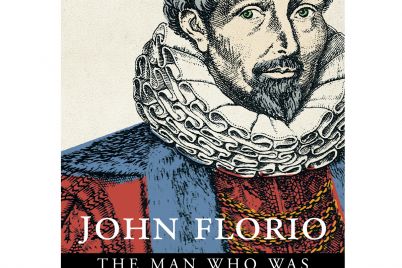To the untrained eye, it seemed that prior to the 1920s there were few noteworthy American boxers of Italian origin – and a limited presence in the decades that followed. But behind many Irish boxing names, there frequently stood an olive-skinned, dark-haired fighter with a hidden identity. More than one thousand Italian professional boxers went by Irish pseudonyms.
Italian immigrants entered boxing at a time when the booming American economy took advantage of Italian muscle to fuel the nation’s growth. However, the ruling elites – the very ones who benefitted from cheap immigrant labour – disparaged Italians, describing them as “biologically incapable” and a “burden on America.”
In addition to enduring these attacks, Italian immigrants came into conflict with the established Irish working class in almost every sphere of society. They fought over municipal and construction jobs. They argued over church matters within the predominantly Irish-controlled Catholic Church. In many instances, Italians were forced to worship in the back, and sometimes even in the basement, of these buildings.
Neighbourhood enmity spilled onto the streets and led to frequent skirmishes, particularly in New York. Italians feared the Irish-controlled police force, leading some to change their names. One individual, Peter Robert Gagliardi, changed his name to Bobby Gleason in an attempt to keep the Irish cops from beating him up. Gleason later became a boxer, before opening the famous Gleason’s Gym in the Bronx.
During this pre-World War I era, most Italian men were labourers, many of them working in railroad construction camps and on large-scale city-wide projects. Their Irish counterparts complained that they worked for lower pay and longer hours. Brawls ensued, and in some cases the problem got so bad that separate crews were delineated along ethnic lines. The strife contributed to an overall anti-Italian sentiment. Some of that sentiment painted Italians as anarchists or communists. It also led to the enactment of immigration quotas, singling the group out as undesirable and inferior. With such prolonged stigmatization, many Italians opted for a name change.
The world of boxing was not immune to such anti-Italianism. Angelo Dundee, the legendary boxing trainer from Philadelphia said: “In the early 1900s it wasn’t advantageous to have an Italian name. Italians were not held in high esteem by the host population. We lived in Italian ghettos, held menial jobs, spoke funnily and ate spaghetti and ice cream, and were considered by the average American to be ‘gangsters’ and members of crime societies.”
The Palermo-born Gaspare Leone was the first notable Italian prize fighter, competing between 1891-1904. He changed his name to Casper Leon, yet he still bore the brunt of racist epithets and jeers from the predominantly Irish crowds. By the time he retired, the derision had not diminished. In 1903, the National Police Gazette captured this, reporting that: “It is amusing to note the way in which the crowd at ringside receives the different nationalities of fighters. There is always a hearty cheer and earnest backing for the Irishman; grins and good-humoured tolerance for the German and virulent hostility to the Italian and the Negro. Put a boy of any race in with an Italian and everybody in the house who is not himself of Italian origin at once begins to root frantically against the son of ancient Rome. It is to the credit of the Italians that they have pushed so far forward against such adverse influences.”
By 1910, more than three million Italian immigrants had arrived in the United States, and those that pursued boxing quickly discovered that an Irish cohort dominated the sport. Boxers like John L. Sullivan and Jim Corbett were part of the steady stream of Irishmen who held the heavyweight title, creating the misconception that nobody could be successful in the ring unless they had an Irish name. This led many Italian fighters to adopt a pseudonym so that their ability to make a living in the ring wasn’t defeated before they even set foot in it.
The Irish stronghold over what was America’s second most popular sport at the time gave them a virtual monopoly over it and allowed them to dictate the rules of engagement to ethnic newcomers. According to Carmelo Bazzano, Professor Emeritus of Physical Education at the University of Massachusetts, commercial considerations also pressured Italians into adopting non-Italian names. Irish and English promoters sought to manipulate the cosmetics of boxing. They forced Italian boxers to adopt Irish names, thereby producing an army of “ready-made” Irish boxers who were palatable to the predominantly Irish crowds.
Those who refused to change their name frequently complained at the lack of regular fights. Minnesota-native Tony Caponi, who fought between 1902-1917, blamed his lack of booking on his surname, believing that to promoters his real name sounded “more like a music master than a prize fighter.” For a time, Caponi changed his name to TC O’Brien. For the next several decades, a host of other Italian boxers from all across the country followed this trend.
New Jersey-native and pre-World War I heavyweight contender Andrew Chiariglione claimed his Irish moniker on a Utah boxing card. Irritated by the announcers’ inability to pronounce his surname correctly and anxious to get the fight under way, Chiariglione bellowed, “Oh, hell, just call me Jim Flynn.” From then on he became known as “Fireman” Jim Flynn, the only fighter to ever knock out Jack Dempsey.
The Calabrian-born Francesco Conte settled with his family in Kenosha, Wisconsin, where he grew up attending Catholic School. When he flattened the school bully one day, his Irish friends started calling him Frankie Conley. He later adopted the alias and in 1910, Conley laid claim to the world bantamweight title when he knocked out Monte Attell.
John DeJohn (Di Gianni) was a member of the famous fighting clan from Syracuse, New York and the eldest son of sharecroppers from Avellino, Campania. He grew up during the 1920s, and remembered the strain on his fellow countrymen to conform. “The Italians were forced to change their names because the Irish and the Germans were running everything,” he reflected. “They had to change their names, otherwise they would have got the worst of it. They got better jobs.”
While no area remained untouched, having an Irish moniker was a necessary evil just to get a foothold in the boxing arena. It offered more prominent billing on boxing cards and ensured a wider appeal to audiences expecting to see men with the crowd-pleasing qualities that were synonymous with Irish-American prize fighters.
But with greater participation and frequent championship success, Italian boxers started to become more visible. As the economic position of Italians improved, vigorous support from the fighter’s local community followed. Italian crowds clamoured to see their hero enter the ring under his real name. The boxing landscape started to shift, and shrewd promoters began to exploit neighbourhood inter-ethnic tensions by bringing them into the ring. Ticket sales rose, and boxers with Italian names grew to be so common that they started to gain acceptance.
By the twenties names like Tony Canzoneri, Frankie Genaro, Fidel La Barba and Mike Ballerino filled the boxing ring, but a significant 62.5 percent still used Irish/Anglicized names. In the next decade this figure declined to 50 percent. Between 1940-49 it is evident that the name changing practice was steadily becoming a thing of the past, down to 36 percent.
Willie Pep (Guglielmo Papaleo) from Hartford, Connecticut, was one boxing star who adopted a ring alias. He asked, “How could I fight with such a name [Papaleo]? It wasn’t a fighting name. I agreed with it. It worked out well for me. We changed our names to fit our styles.” Pep confirmed that he had never been leaned upon to change his name and his manager Lou Viscusi was Italian. When Pep ruled the featherweight division, there was an established presence and dominance of Italian-American managers and promoters operating nationwide.
By the fifties there are hardly any Italian boxers using an Irish or Anglicized nom de guerre. They no longer faced a backlash simply because of their name. Champions Jake La Motta, Carmen Basilio, Rocky Marciano, Tony De Marco, Paddy De Marco, Joey Giardello and Willie Pastrano and contenders Rocky Castellani, Joey Giambra, Ernie Durando and Danny Nardico could step into the ring under their real names and proudly represent those that came before them.
Italian-American Boxing Champions and Title Claimants
Using Irish/Anglicized Names, 1900-1955
Hugo Kelly (Ugo Micheli)
1905-07, 1910 World Middleweight Title Claimant
Kid Murphy (Peter Frascella)
1907 World Bantamweight Title Claimant
Frankie Conley (Francesco Conte)
1910-11 World Bantamweight Title Claimant
Johnny Wilson (Giovanni Panico)
1920-23 World Middleweight Champ
Johnny Dundee (Giuseppe Curreri)
1921-23, 1923 Junior-Lightweight & 1923 featherweight champ
Carl Duane (Carlo Iacconetti)
1923-24 World Junior-Featherweight Champ
Steve “Kid” Sullivan (Stefano Tricamo)
1924-25 World Junior-Lightweight Champ
Eddie Martin (Eduardo Martino)
1924-25 World Bantamweight Champ
Rocky Kansas (Rocco Tozzo)
1925-26 World Lightweight Champ
Bushy Graham (Angelo Geraci)
1928-29 World (NYSAC) Bantamweight Champ
George Nichols (Phillip Nicolosi)
1932 World (NBA) Light-Heavyweight Champ
Young Corbett III (Raffaele Giordano)
1933 World Welterweight Champ
Lou Ambers (Luigi D’Ambrosio)
1936-38, 1939-40 World Lightweight Champ
Jimmy Perrin (James La Cava)
1940 World (Louisiana) Featherweight Champ
Willie Pep (Guglielmo Papaleo)
1942-48, 1949-50 World Featherweight Champ
Tippy Larkin (Antonio Pilliterri)
1946 World Junior-Welterweight Champ
Joey Maxim (Giuseppe Berardinelli)
1950-52 World Light-Heavyweight Champ
Excerpt from the book The Real Rockys: A History of the Golden Age of Italian Americans in Boxing 1900-1955. Limited copies are available by contacting the author. Rolando Vitale is based in the UK and has worked for over 20 years as a writer, researcher and translator. The Real Rockys is his first book. Contact him at rv1publishing@aol.com.




